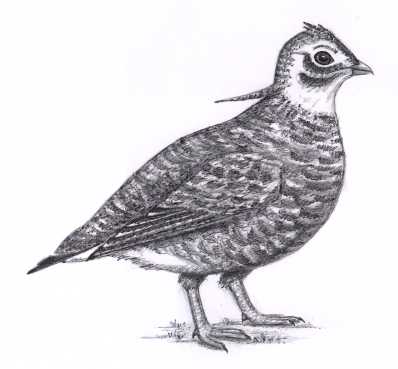
Dear Bird Folks:
Before a recent trip to Martha’s Vineyard, my friend told me that I should look for a bird called a “heath hen.” My bird book doesn’t list a bird called “heath hen.” Was my friend pulling my leg?
Jason, Kingston
Well, Jason,
I would rather not comment on what your friend does with your leg, but yes, there was indeed a bird called a heath hen.
The heath hen story has strong local ties, because not long ago they used to thrive right here. The very spot where most of you are reading this newspaper was home to thousands of handsome and stately heath hens. I am not talking about way back in the dinosaur or unicorn days. These birds lived here until just a few years ago. Heath hens didn’t become extinct until the spring of 1932. So, if you do the math, anyone who is now in their 70’s could have seen a wild, living heath hen. I personally don’t know anyone that old, but I hear they do exist.
Heath hens, a subspecies of the prairie-chicken of our western states, are grouse-sized birds that used to live along the Atlantic states from coastal New Hampshire to Virginia. When the Pilgrims arrived, it was such an extremely common game bird, that soon heath hen McNuggets were on the menu of every hut in Plimoth Plantation.
Heath hens, when not being eaten, were admired for their amazing, bordering on ridiculous, mating displays. Each spring, probably in the very spot where we now have T-shirt shops, heath hens would perform their mating dances. A male would fan out its tail like a peacock, inflate big orange sacks on the sides of its neck, give off a loud tooting howl and rush toward the other males on the breeding ground. Finally, the bird would leap high into the air, do a complete 360, and land like a feathered break dancer. The leap stimulated other males to do the same until the mating ground, called a “lek,” was literally hopping with these wacky male heath hens. If these birds were alive today, they would be featured headliners on MTV. But back in the 1930’s there was no television so you needed to learn Morse Code if you wanted to watch MTV.
Throughout the 1800’s hunting pressure proved to be too much for the heath hen and the birds all but disappeared. By the early 1900’s the last remaining heath hens in the entire world lived in a remote section of Martha’s Vineyard. Finally, the government stepped in and in 1908 gave the heath hen full protection and designated an area of the Vineyard as a heath hen reserve. But was it too little too late to save the heath hen? Yes, of course it was. No species could survive being crammed into one small habitat. At first the population started to grow, but then an endless sequence of bad luck hit the flock. First the reserve was hit by fires that killed hundreds of birds. With the protective habitat burned out, the surviving birds were easy pickings for an influx of hawks that arrived that winter. The next winter, of course, was one of the worst ever and more birds died of starvation. Finally, in 1932, after a bout with a disease spread by domestic poultry, the birds had had enough and exercised the extinction clause in their contract. The last living heath hen was seen in March of that year and none were ever seen again. The Vineyard’s old heath hen reserve is now called Correllus State Forest. It’s the same area where President Clinton jogged a few years ago. You might want to visit that area some day, Jason, but sadly you will no longer hear the mating calls of the heath hen. If you hear mating calls now, it’s probably just Bill Clinton.